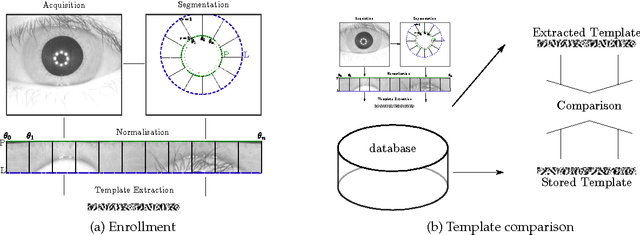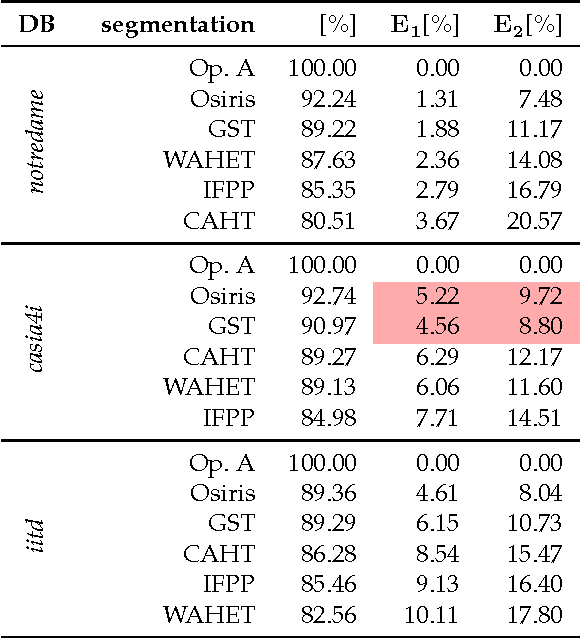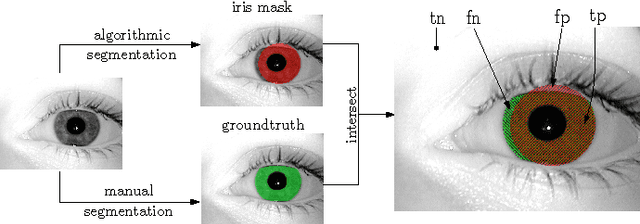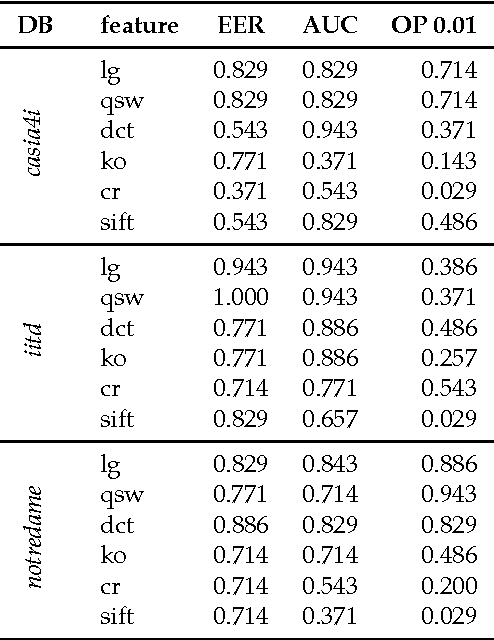Heinz Hofbauer
Experimental analysis regarding the influence of iris segmentation on the recognition rate
Nov 10, 2022



Abstract:In this study the authors will look at the detection and segmentation of the iris and its influence on the overall performance of the iris-biometric tool chain. The authors will examine whether the segmentation accuracy, based on conformance with a ground truth, can serve as a predictor for the overall performance of the iris-biometric tool chain. That is: If the segmentation accuracy is improved will this always improve the overall performance? Furthermore, the authors will systematically evaluate the influence of segmentation parameters, pupillary and limbic boundary and normalisation centre (based on Daugman's rubbersheet model), on the rest of the iris-biometric tool chain. The authors will investigate if accurately finding these parameters is important and how consistency, that is, extracting the same exact region of the iris during segmenting, influences the overall performance.
Two-stage CNN-based wood log recognition
Jan 12, 2021



Abstract:The proof of origin of logs is becoming increasingly important. In the context of Industry 4.0 and to combat illegal logging there is an increasing motivation to track each individual log. Our previous works in this field focused on log tracking using digital log end images based on methods inspired by fingerprint and iris-recognition. This work presents a convolutional neural network (CNN) based approach which comprises a CNN-based segmentation of the log end combined with a final CNN-based recognition of the segmented log end using the triplet loss function for CNN training. Results show that the proposed two-stage CNN-based approach outperforms traditional approaches.
 Add to Chrome
Add to Chrome Add to Firefox
Add to Firefox Add to Edge
Add to Edge